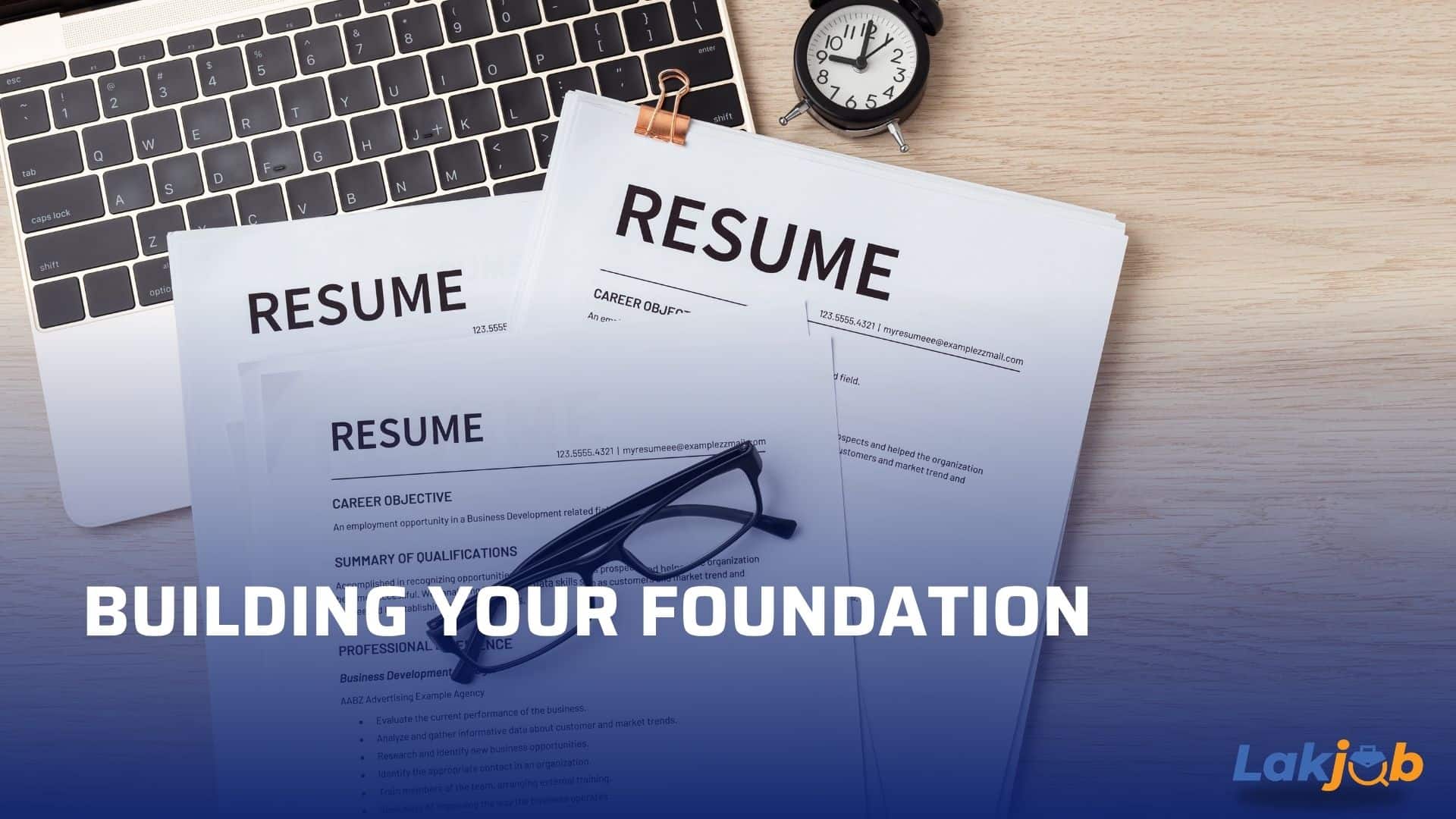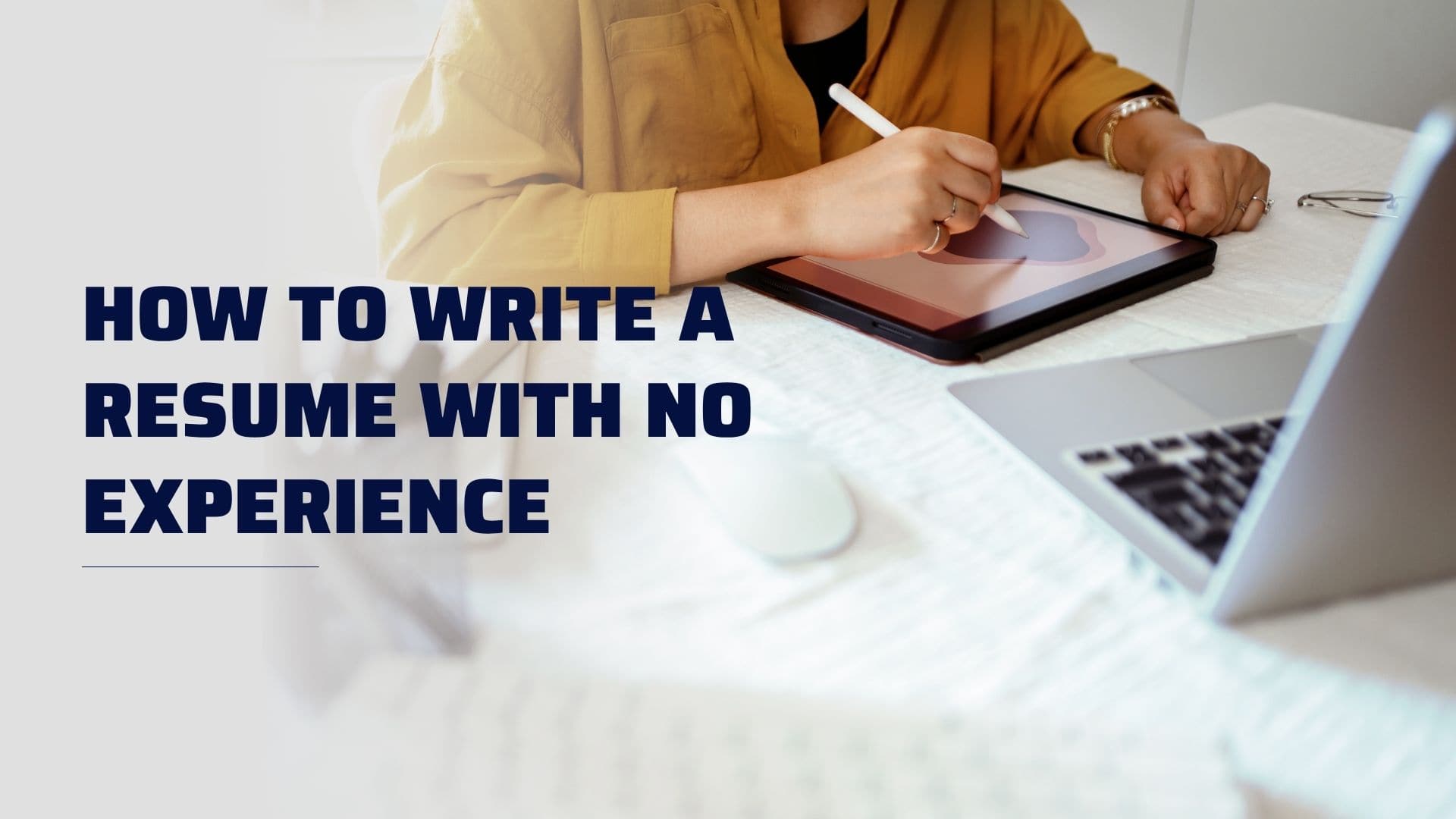Landing your first professional role can feel like facing a locked door without a key.
You scan job postings – “2-3 years experience required” – and your confidence wavers.
How do you compete when your professional history seems blank? Take heart. Every accomplished professional started exactly where you are.
Your resume isn’t a record of what’s missing; it’s a strategic showcase of your potential, skills, and readiness to excel.
This guide transforms the “no experience” hurdle into your advantage, providing actionable steps to build a resume that opens doors in the competitive US entry-level job market.
Backed by insights from top career experts and hiring managers, we’ll help you translate your academic, extracurricular, and personal achievements into undeniable value.
Why Your Potential Trumps Past Titles (The Hiring Manager’s Perspective)

The biggest barrier for new grads isn’t the lack of experience itself – it’s misunderstanding what employers truly seek in entry-level candidates.
Hiring managers expect you’re starting fresh.
Their critical question is: “Can this person learn quickly, contribute effectively, and thrive on our team?”
They actively look for evidence of:
- Relevant & Transferable Skills: Can you perform core tasks (or rapidly acquire them)? Think problem-solving, communication, technical aptitude.
- Proven Work Ethic & Initiative: Are you reliable, proactive, and driven to deliver results?
- Strong Cultural Fit: Will you collaborate well and adapt to our environment?
- Learning Agility: Can you absorb new information and apply it effectively?
- Professionalism: Do you communicate clearly and conduct yourself appropriately?
Fact: A 2024 National Association of Colleges and Employers (NACE) report found that while 61% of entry-level job postings mentioned experience, employers consistently ranked “Problem Solving, “Teamwork,” and “Communication” as the top attributes sought in new graduates. Your mission is to translate your background into concrete proof of these qualities.
Building Your Foundation: Essential Resume Sections & Strategies

Forget the chronological format. Entry-level candidates shine with a hybrid resume structure that strategically emphasizes skills and potential, while still incorporating experience (even non-traditional!). Here’s your blueprint:
The Professional Handshake: Header & Contact Info

- Your Name: Prominently at the top (18-22pt font).
- Phone Number: Use a reliable number with a professional voicemail greeting.
- Professional Email: Use a clear format like [email protected]. Avoid informal addresses.
- LinkedIn URL (Highly Recommended): Essential for tech, business, and creative fields. Ensure your profile mirrors your resume and is 100% complete. (Tip: Use a custom LinkedIn URL).
- Location: City, State (e.g., Austin, TX). Full address is unnecessary and a privacy risk.
- (For Students/Grads): Consider adding your University, Major, and Expected/Graduation Date near your name if space allows and is highly relevant (e.g., The University of Texas at Austin | B.S. Computer Science | Expected May 2025).
Crafting Your 30-Second Pitch: The Compelling Summary

- Ditch the Generic: Phrases like “Hardworking student seeking opportunity…” tell employers nothing.
- The Hybrid Summary (Entry-Level Gold Standard): Combine your career objective with 2-3 powerful selling points directly relevant to this specific job.
Action Plan:
- Analyze the Job Description: Circle key skills, qualifications, and company values.
- Identify Your Top Matches: Which of your skills/experiences align best?
- Lead with Value: State what you offer and your goal clearly.
- Tailor Relentlessly: Mention the target job title and ideally the company. Weave in 1-2 key keywords from the job description.
Real-World Examples:
- Applying for Marketing Assistant: “Motivated Communications graduate (GPA: 3.7) seeking an Entry-Level Marketing Assistant role at [Company Name]. Eager to apply proven skills in social media content creation (increased club Instagram engagement by 30%), data analysis (Google Analytics Certified), and project coordination developed through academic campaigns and event planning to support dynamic marketing initiatives.”
- Applying for Software Developer Intern: “Detail-oriented Computer Science sophomore (Expected Grad: 2026) passionate about building user-centric applications. Seeking a Summer 2025 Software Developer Internship to leverage proficiency in Python, Java, and web development (HTML/CSS/JavaScript) demonstrated through academic projects and open-source contributions, alongside strong problem-solving and collaborative skills.”
- Applying for Administrative Coordinator: “Highly organized Business Administration student with demonstrated excellence in office management and customer service. Proven ability to streamline processes (reduced filing errors by 15% in volunteer role) and manage multiple priorities effectively. Seeking an Administrative Coordinator position to apply technical skills (MS Office Suite, Google Workspace) and proactive communication style in a fast-paced environment.”
Your Academic Powerhouse: Elevating the Education Section

This section is often your anchor – make it robust and relevant.
Structure & Impact Boosters:
- Degree: Bachelor of Science/Arts in [Major]
- University: [University Name], [City, State]
- Graduation: Month, Year (or “Expected [Month] [Year]”)
- GPA: Include if 3.0 or higher (Consider Major GPA if significantly stronger). Omit if below 3.0. (NACE data shows GPA remains a key filter for many large employers).
- Academic Honors: Dean’s List (specify semesters), Scholarships (e.g., “Dean’s List: Fall 2023 – Spring 2025,” “Presidential Scholar,” “Departmental Award in Biology”).
- Relevant Coursework: List 3-5 courses highly pertinent to the target job. Be specific: “Financial Accounting,” “Data Structures & Algorithms,” “Social Media Marketing Strategy,” “Technical Writing,” “Organizational Behavior.” (Avoid listing basic prerequisites unless highly specialized).
- Key Projects: This is CRITICAL. Highlight 1-3 significant academic projects. Use concise bullet points:
- Describe: What was the project’s goal?
- Your Role: What did you specifically contribute?
- Skills/Tools Used: What technologies or methodologies did you apply?
- Result/Outcome: Quantify impact if possible! Example: “Developed a market analysis report for a local bakery as part of BUS 350; recommended Instagram strategy adopted by the owner, projected to increase local customer engagement by 15%.”
- Study Abroad/Relevant Programs: Mention if it developed relevant skills (e.g., cultural awareness, language, specific coursework).
- High School: Omit unless you are a current high school student or recent grad applying for roles directly out of high school.
Unlocking Hidden Experience: It’s More Than Paid Jobs

Reframe “Experience”: Leadership, problem-solving, and responsibility are cultivated everywhere. Dig deep!
Categories to Showcase (Use Clear Subheadings):
- Internships (Paid/Unpaid): Treat these like professional roles. Include Organization, Location, Role Title, Dates. Use strong bullet points (see below).
- Volunteer Work: Highlight leadership, organization, and impact. Example Role: “Volunteer Coordinator Assistant, City Food Bank, Jan 2024 – Present”
- Major Academic Projects: Group significant relevant projects under a “Projects” heading. Detail scope, your role, tools, outcomes. Example: “Capstone Project: Mobile App for Campus Navigation (Team of 4)”
- Extracurricular Leadership: Club President, Sports Captain, Fraternity/Sorority Officer, Event Organizer. Emphasize planning, teamwork, budgeting, communication. Example Role: “Social Media Chair, University Marketing Club, Sep 2023 – May 2025″
- Part-Time Jobs (ANY): Retail, food service, tutoring, babysitting, administrative temp work. Focus on transferable skills: Customer service, time management, problem-solving, cash handling, responsibility, teamwork. Example Role: “Sales Associate, BookSmart Retail, Jun 2023 – Aug 2024″
- Freelance/Gig Work: Web design, social media management, writing, coding projects (even for friends/family). Frame it professionally. Example Role: “Freelance Social Media Content Creator (Self-Employed), Mar 2024 – Present”
Writing Impactful Bullet Points (The STAR-Lite Formula):

- Strong Action Verb: Start powerfully (see list below).
- Context: Briefly describe the task or responsibility.
- Action & Skill: What did you do? What skill did you use?
- Quantifiable Result (CRITICAL): What was the outcome? Use numbers whenever possible!
Examples:
- (Retail): “Managed daily cash register operations averaging $1,500+ with 100% accuracy, resolving customer inquiries promptly to enhance satisfaction scores by 10% (measured via internal surveys).”
- (Volunteer): “Coordinated logistics for annual charity 5K, recruiting 15 volunteers and securing $1,500 in local sponsorships, contributing to a 20% increase in participant turnout year-over-year.”
- (Club Leadership): “Led a team of 8 members to organize the ‘Tech Futures’ career fair, attracting 25+ companies and facilitating 150+ student-alumni connections.”
- (Academic Project): “Collaborated on a 4-person team to design and prototype a sustainable campus waste app using Figma; presented findings to faculty panel, winning ‘Most Innovative Solution’ award.”
Your Keyword Powerhouse: The Skills Section (ATS & Human Ready)
Non-Negotiable for ATS: Applicant Tracking Systems scan for keywords. Missing them means instant rejection.
Structure for Impact:
- Hard Skills (Technical/Tangible): List specific software (Microsoft Excel, PowerPoint; Google Analytics; Adobe Photoshop, Illustrator; Python, Java, SQL; Salesforce; HTML/CSS; lab techniques; languages – “Fluent in Spanish”).
- Soft Skills (Interpersonal/Transferable): Be specific: Written Communication, Verbal Communication, Team Collaboration, Problem-Solving, Critical Thinking, Adaptability, Time Management, Organization, Attention to Detail, Leadership, Customer Service, Initiative, Project Coordination.
Action Plan:
- Brainstorm: List every skill you possess (from coursework, projects, activities, jobs).
- Extract Keywords: Pull exact terms from the “Required” and “Preferred” sections of the job description.
- Match & Prioritize: Include all relevant keywords you genuinely have. Prioritize those listed first in the job description.
- Be Honest: Only list skills you can confidently discuss.
- Tailor for EVERY Application: This section MUST change based on the job.
- Format: Use clear bullet points. Group related skills. Avoid vague terms like “team player.”
Pro Formatting & ATS Optimization: Ensuring Your Resume Gets Seen
One Page is Standard: Entry-level resumes should be concise. One page is expected.
Clean, Professional Design is Key:
- Font: Professional & Readable (Calibri, Arial, Garamond, Times New Roman – 10-12pt).
- Margins: 0.5 to 1 inch.
- White Space: Use it generously. Avoid clutter.
- Consistency: Uniform formatting for headings, bullet points, dates.
- Avoid: Photos (US standard), graphics, tables, complex columns (confuse ATS), colored text backgrounds. Stick to black text on white.
ATS Optimization is Mandatory:
- Keywords: Use them throughout (Summary, Skills, Experience Bullets, Education).
- File Type: Save as a PDF unless the application specifically requests a .docx.
- Standard Headings: Use “Summary, “Education, “Experience, “Skills.” Avoid “My Journey” or “Accomplishments.”
- No Headers/Footers: Text here often gets ignored by ATS.
- Simple Bullets: Use standard round or square bullets.
Power Up with Action Verbs:
Achieved, Analyzed, Built, Collaborated, Created, Developed, Enhanced, Established, Generated, Implemented, Improved, Led, Managed, Organized, Resolved, Streamlined, Supported, Trained, Utilized.
Ditch: “Helped,” “Assisted with,” “Responsible for,” “Duties included.”
The Magic of Quantification:
Numbers grab attention and prove impact. Estimate if exact figures aren’t available.
- Weak: “Managed social media accounts.”
- Strong: “Managed 3 club social media accounts (Instagram, Facebook, LinkedIn), increasing total follower engagement by 25% over 6 months through targeted content calendars and community interaction.”
Proofread Like Your Career Depends On It (It Does!):
Typos and grammatical errors are instant disqualifiers.
- Read aloud.
- Use spell/grammar check (but don’t rely solely on it).
- Ask a trusted friend, career counselor, or mentor to review.
The Ultimate Entry-Level Resume Checklist (Before Hitting Submit!)
- Tailored: Customized for this specific job and company? Keywords integrated throughout?
- Concise & Clear: One page? Easy to skim? Effective use of bullet points and white space?
- Error-Free: Meticulously proofread for typos, grammar, punctuation, and consistent formatting?
- Compelling Summary: Does it state your goal and key selling points tailored to the role?
- Education Powerhouse: Degree, university, grad date, GPA (if >3.0), relevant courses/honors, key projects highlighted?
- Experience Unlocked: All relevant internships, projects, volunteer work, leadership, part-time jobs included? Bullet points use strong action verbs and quantifiable results (using STAR-lite)?
- Skills Targeted: Hard and soft skills listed? Directly matching keywords from the job description?
- Professional Presentation: Clean, simple design? Standard headings? Saved as PDF (unless .docx specified)?
- Contact Info Perfect: Phone, professional email, LinkedIn URL (optional) accurate and working?
- ATS Ready: No tables, graphics, or fancy formatting? Text in headers/footers avoided?
Beyond the Resume: Launching Your Career Journey
Your resume is the key to the interview door, but your preparation continues:
- Craft a Tailored Cover Letter: Even if “optional,” a strong cover letter is your chance to tell your story, connect your background passionately to the specific role and company, and express genuine enthusiasm. Explain why them.
- Optimize Your LinkedIn: Mirror your resume. Achieve “All-Star” status. Use a professional photo. Write a compelling headline and summary. Connect with alumni and industry professionals. Follow target companies. Engage meaningfully with content.
- Network Strategically & Authentically: Talk to professors, career counselors, family, friends, alumni. Attend virtual/in-person career fairs and industry meetups. Request brief informational interviews – they are invaluable for insights and referrals.
- Prepare Relentlessly for Interviews: Research the company deeply (mission, values, recent news, products). Practice common behavioral questions (“Tell me about a time…”) using the full STAR method (Situation, Task, Action, Result). Prepare 3-5 insightful questions to ask the interviewer.
- Follow Up Professionally: Send a personalized thank-you email within 24 hours of every interview. Reiterate your interest, highlight a key qualification, and mention something specific discussed.
You Are Ready. Your Potential is Your Power.
Crafting your first resume might feel daunting, but remember this: Your value isn’t defined by the jobs you haven’t held.
It’s defined by your knowledge, your honed skills, your demonstrated drive, and your immense potential.
You possess more relevant experience than you realize – woven into your academic projects, leadership roles, volunteer commitments, and even part-time work.
By strategically framing these experiences, focusing laser-like on transferable skills, quantifying your impact, and tailoring relentlessly for each opportunity, you create a resume that doesn’t just fill a page, but tells a compelling story of a capable, motivated, and valuable asset ready to contribute and grow.
Stop seeing “no experience” as a deficit. Start confidently showcasing your readiness to learn, solve problems, and make a tangible difference.
Your professional journey begins now. Take this guide, build your winning resume, and step forward with purpose.
The right opportunity awaits. Go get it! Ready to build more job-ready skills?
Explore project-based courses and Professional Certificates from industry leaders like Google, Meta, IBM, and Microsoft on platforms like Coursera, LinkedIn Learning, or edX to further enhance your qualifications and confidence.
Focus on developing in-demand skills identified in your target roles.
F.A.Q
Q1: I truly have no work experience, not even volunteer work or personal projects. What should I include on my resume?
A1: Don’t worry. If you genuinely lack volunteer or project experience, focus entirely on your education and skills. Detail relevant coursework, explaining what you learned and the skills developed. Highlight academic projects, describing their goal, your role, and the outcome. Even skills from hobbies or interests like managing an online community’s social media or organizing small events can be listed under your “Skills” section, emphasizing communication or organizational abilities. Any relevant online certifications are also a strong asset.
Q2: How long should my resume be if I have no experience?
A2: For entry-level candidates or those with no experience, your resume should ideally be one page. Focus on relevance and conciseness, ensuring every word adds value. While two pages can be acceptable for extensive and deeply relevant academic projects or extracurriculars, this is rare for someone truly starting from scratch.
Q3: Should I include my GPA on my resume?
A3: Yes, it’s recommended to include your GPA (Grade Point Average) if it is 3.0 or higher (on a 4.0 scale). A strong GPA demonstrates work ethic, discipline, and aptitude in your field of study. If your GPA is below 3.0, you may choose to omit it and instead emphasize other relevant projects or achievements.
Q4: How do I make my resume “ATS Friendly”?
A4: Making your resume ATS friendly is crucial to ensure it doesn’t get filtered out by Applicant Tracking Systems. Key tips include using relevant keywords from the job description throughout your resume. Stick to a standard, clean format without complex graphics or tables, and use easily readable fonts. Always use standard section headings like “Education” and “Skills.” Remember to save your resume as a PDF unless a .docx file is specifically requested.
Q5: Should I write a cover letter if it’s optional?
A5: Yes, it is highly recommended to write a cover letter, even if it’s marked as “optional.” A cover letter provides a vital opportunity to explain your specific interest in the role and company. It allows you to connect your unique background, even without formal experience, to the job requirements by highlighting your transferable skills and demonstrating your enthusiasm and initiative. A personalized cover letter can significantly set you apart.
I specialize in managing and auditing end-to-end HR functions, ensuring full compliance with state and federal regulations. I partner with leadership to drive strategic HR initiatives and implement necessary changes. My core strength lies in identifying, hiring, and training top talent to enhance team performance and support organizational growth.






